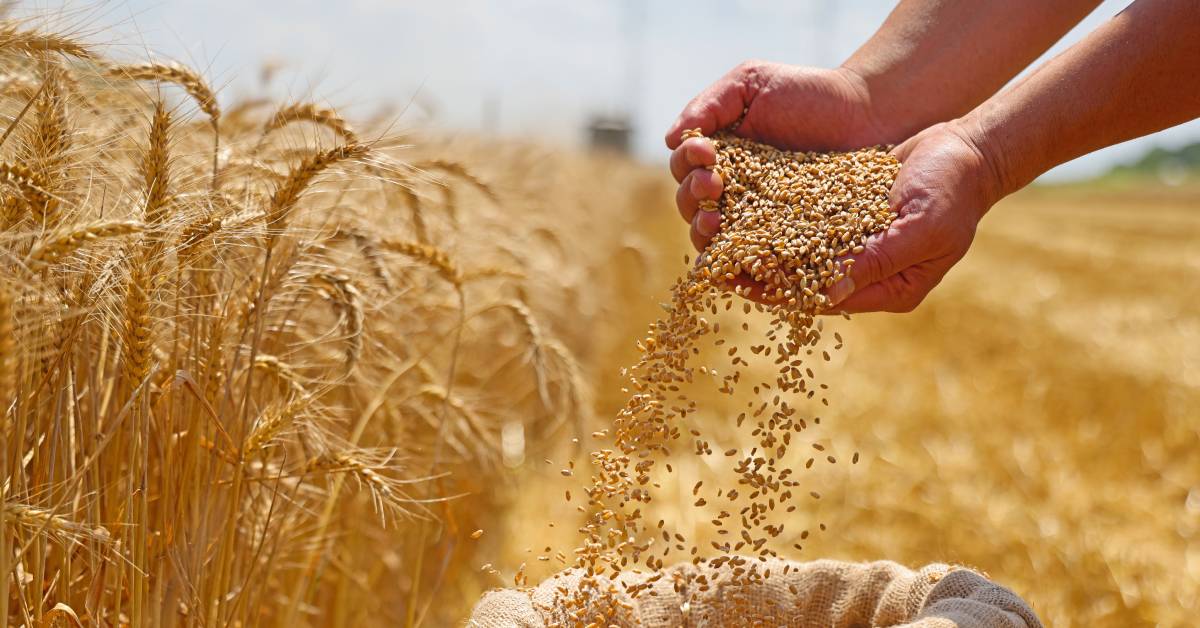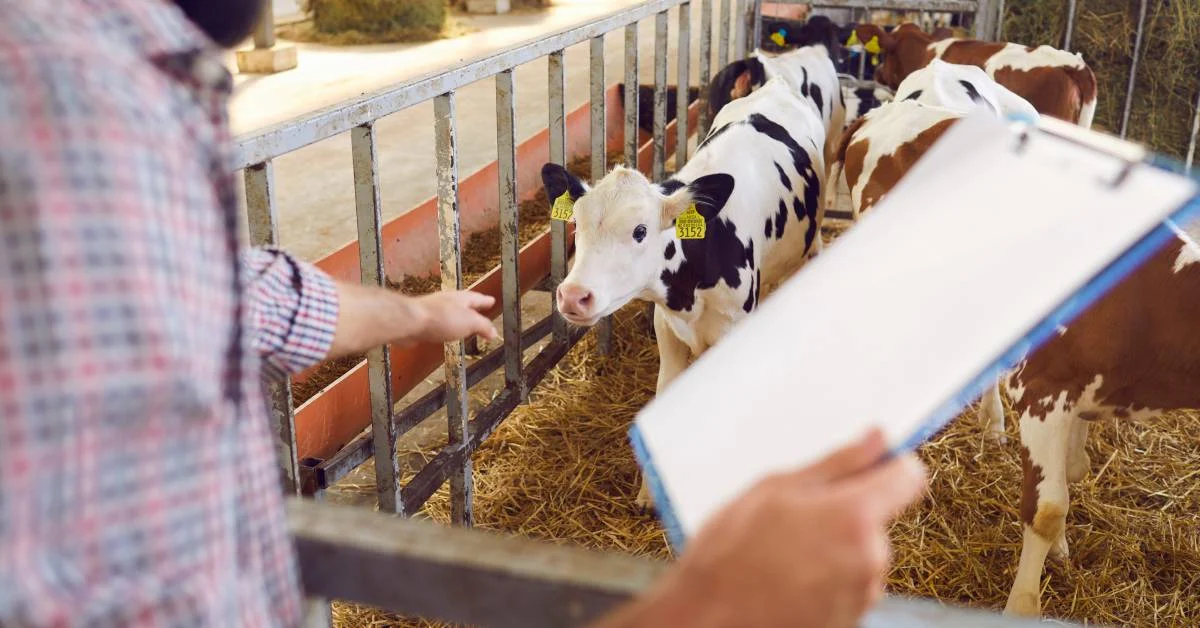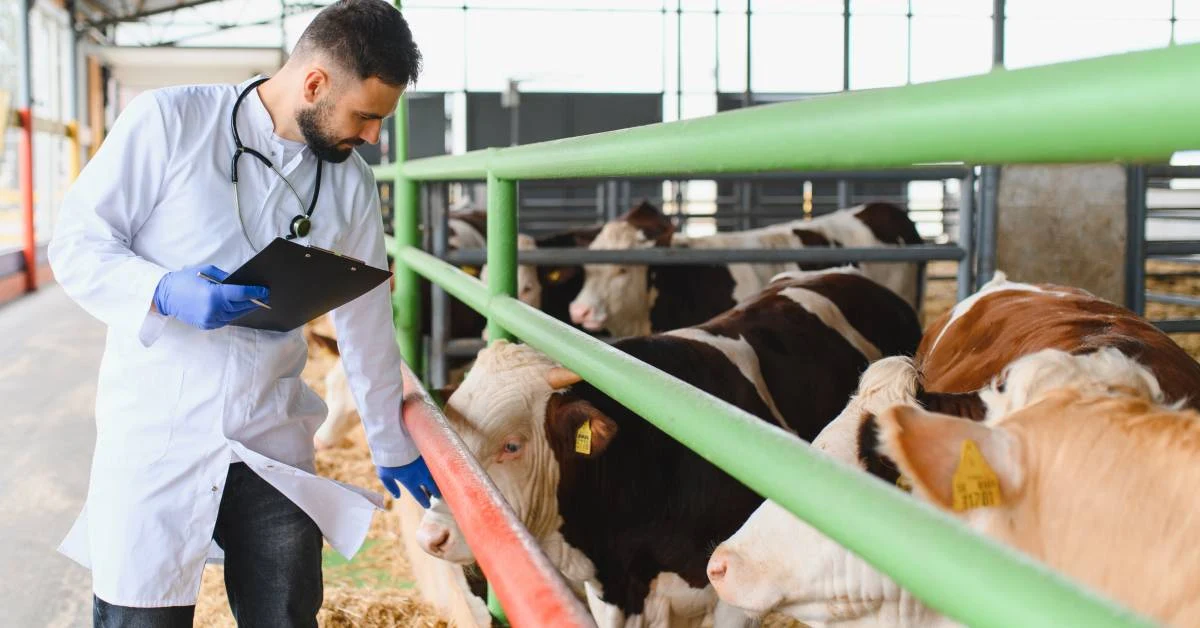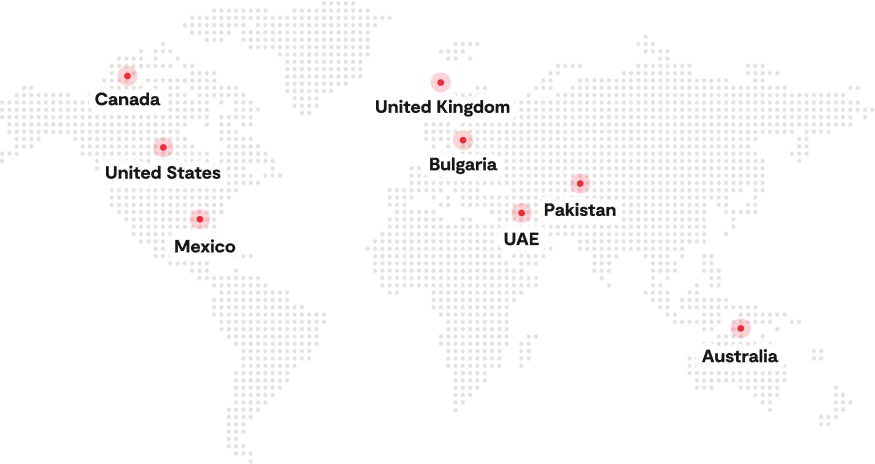Grain quality plays a decisive role in agriculture and global trade. For farmers, processors, and exporters, it determines not only the market price but also the reputation they build with buyers. High-quality grain meets strict standards for size, moisture, purity, and nutritional value, while poor-quality grain can lead to rejected shipments, financial loss, and strained business relationships. In developing countries, an estimated 20% to 40% of cereal grains are lost after harvest, largely due to poor storage, pest damage, and improper handling.
Quality directly affects profitability. Buyers are willing to pay more for grain that meets their specifications consistently. For producers, this can mean better margins and the opportunity to secure long-term supply contracts. On the other hand, inconsistent quality can push buyers toward competitors, affecting both revenue and market position.
This article will explore the complete spectrum of grain quality control. We will cover techniques for grain quality analysis, practical steps for grain quality testing, and strategies to improve profitability. By the end, you will have a clear view of how effective quality control safeguards both your product and your business.
Understanding Grain Quality
In agriculture and trade, grain quality refers to the set of characteristics that determine the value and usability of harvested grain. Buyers and processors evaluate grain based on physical, chemical, and biological factors, all of which influence market price and compliance with export regulations.
Physical Characteristics
- Kernel Size & Uniformity – Larger, well-formed kernels are preferred for efficient milling and consistent end products.
- Moisture Content – Critical for preventing spoilage, mold, and mycotoxin contamination. Most export markets require levels below 14%.
- Color & Purity – Clean, bright grain with minimal foreign matter is valued more highly.
Chemical Characteristics
- Protein Content – Impacts nutritional value and processing performance (e.g., high-protein wheat for bread making).
- Starch Composition – Key for industries like ethanol production.
- Oil Levels – Important in crops such as soybeans and sunflower seeds.
Biological Characteristics
- Pest-Free – Absence of insects and larvae ensures compliance with food safety standards.
- Disease-Free – Free from fungal growth and microbial contamination.
- Low Contaminants – Minimal mycotoxins, pesticide residues, or foreign material.
Below are the comparison of the key grain quality parameters of the most commonly used gain types
| Grain Type | Key Quality Parameters | Common Quality Targets | Impact on End Use |
| Wheat | Protein content, test weight, moisture | 11–14% protein, ≥ 60 lb/bu, ≤ 12% moisture | Bread quality, gluten strength, milling yield |
| Corn | Moisture, kernel integrity, starch content | ≤ 15% moisture, minimal broken kernels, high starch | Feed efficiency, ethanol yield, food processing |
| Soybeans | Protein content, oil content, foreign material | 34–38% protein, 18–20% oil, ≤ 2% foreign material | Meal quality, oil extraction yield, animal feed value |
Market and Export Standards
Grain is graded against international benchmarks set by bodies like the USDA, FAO, and ISO. These specify acceptable ranges for:
- Moisture percentage
- Foreign matter
- Broken kernels
- Contaminant levels
Meeting or exceeding these standards ensures better pricing and stronger trade relationships.
The Role of Grain Quality Control in the Supply Chain
Grain quality control is more than a technical process, it’s a safeguard for value, market access, and reputation. By ensuring grain meets strict standards at every stage, from harvest to delivery, producers can protect profitability and strengthen buyer relationships. In today’s competitive markets, consistent quality is the key to long-term success.
From Farm Gate to Final Buyer
Grain quality control ensures that grain maintains its value at every stage of the supply chain, starting from harvesting and continuing through storage, processing, and transport. Each step has the potential to preserve or compromise quality, making consistent monitoring essential.
Impact on Market Acceptance
In both domestic and international trade, Grain Quality is a deciding factor in whether shipments are accepted or rejected. Strict import standards mean that even small deviations in moisture, purity, or size can result in costly rejections or penalties. In local markets, consistent quality maintains steady demand and better pricing.
Cost Savings Through Reduced Losses
Strong quality control practices reduce spoilage, contamination, and pest damage, all of which can lead to significant waste. By preventing these issues, producers save on replacement costs and protect their profit margins.
Building Brand Reputation
High and consistent Grain Quality builds trust with buyers. Producers and exporters known for reliable quality often secure repeat business and long-term contracts, giving them an edge in competitive markets.
Grain Quality Analysis Techniques
Grain quality analysis is the process of measuring and evaluating the physical, chemical, and biological properties of grain to ensure it meets market and export standards. It covers a wide scope, from identifying moisture levels to testing protein content, oil percentage, and the presence of contaminants. Accurate analysis provides a foundation for fair pricing, informed decision-making, and maintaining consistent product quality.
Laboratory-Based Grain Analysis
Moisture Analyzers
Moisture content is one of the most critical factors in grain quality. Laboratory-grade moisture analyzers use precision heating and weighing to determine exact water content, helping to prevent spoilage, mold growth, and quality deterioration.
Near-Infrared (NIR) Spectroscopy
NIR spectroscopy is a rapid, non-destructive method used to evaluate multiple quality parameters at once, including protein, oil, and moisture content. It’s widely adopted by large grain processors for its speed and reliability.
Protein and Oil Content Testing
Protein levels directly influence grain market value, especially in wheat, while oil content is a key factor for crops like soybeans. Specialized instruments can assess these values quickly, guiding pricing and market positioning.
On-Site and Portable Analysis Tools
Modern handheld analyzers and portable NIR devices allow farmers, buyers, and traders to assess grain quality directly at storage sites, silos, or markets. These tools save time, reduce the risk of quality disputes, and enable faster transaction decisions.
Common Tests for Quality Grain
To ensure grain meets market and export standards, several tests are performed to evaluate its physical, chemical, and biological properties. These assessments help determine pricing, storage needs, and suitability for specific end uses.
Moisture Content Testing
Moisture testing is essential, as excess moisture can cause mold, spoilage, and loss of market value. Tools range from portable moisture meters for field use to highly precise laboratory analyzers. On average, lab testing costs between $20 and $60 per sample, with results typically available in 1 to 3 business days.
Grain Weight and Density Measurement
Also known as test weight, this metric indicates grain soundness and overall quality. Heavier, denser grains often command higher prices in the market. Testing is often part of a quality package costing below $100, with results usually delivered within 3 business days.
Purity and Foreign Matter Checks
Purity tests involve separating broken kernels, dust, weed seeds, and other contaminants. These checks ensure the grain meets buyer or export specifications for cleanliness. The cost averages around $50-60 per test, and turnaround time is typically about 3 days.
Germination Testing for Seed Grain
For grains intended for planting, germination rate is a critical factor. Lab tests simulate optimal conditions to measure the percentage of seeds likely to sprout successfully. This test generally costs $30 to $70 and requires a longer processing time of 7 to 10 days to account for the growth cycle.
Rapid Testing Technologies vs. Traditional Methods
| Feature | Rapid Testing Technologies | Traditional Laboratory Methods |
| Speed | Immediate results on-site | Results in hours or days |
| Location | Portable, used in fields or storage facilities | Fixed labs with specialized equipment |
| Accuracy | Good for quick checks, may have slight variations | Highly precise and standardized |
| Parameters Tested | Moisture, protein, some quality traits | Full range of physical, chemical, and biological tests |
| Cost per Test | Lower ongoing cost after device purchase | Higher per-test cost due to lab fees |
| Use Case | Quick decision-making during harvest, buying, or storage | Official certification, dispute resolution, and export requirements |
Role of Standardized Testing Protocols
International trade in grain relies heavily on recognized testing standards. Organizations such as ISO (International Organization for Standardization), ASTM International, and GAFTA (Grain and Feed Trade Association) provide protocols that ensure tests are conducted consistently and results are universally accepted. Compliance with these standards reduces disputes, increases buyer confidence, and facilitates smoother global transactions.
Technology in Grain Quality Control
Modern technology has transformed how grain quality is monitored, tested, and documented. From on-site analysis to blockchain-based traceability, digital solutions are helping producers, traders, and buyers ensure consistency, reduce losses, and meet market requirements.
Digital Grain Analyzers and IoT-Enabled Monitoring
Digital analyzers can quickly measure moisture, protein, and other parameters with high precision. IoT-enabled sensors placed in storage silos track temperature, humidity, and insect activity in real time, alerting operators to take corrective action before quality deteriorates.
Automated Sorting and Grading Systems
Advanced optical sorters use high-speed cameras, lasers, and machine learning to separate grains by size, color, and defect type. These systems reduce human error, improve uniformity, and increase throughput.
Remote Sensing and AI-Based Defect Detection
Drones and satellite imagery help assess crop conditions before harvest, identifying pest or fungal issues that could impact grain quality. AI-powered image recognition tools detect defects such as discoloration, broken kernels, or contamination during processing.
Blockchain for Traceability
Blockchain technology in agriculture creates a secure, tamper-proof record of grain quality data from farm to end-user. This transparency builds trust with buyers and regulators while helping exporters meet strict import requirements.
Best Practices for Maintaining Quality Grain
Maintaining grain quality requires attention to detail from harvest through storage. Following proven crop management practices minimizes damage, preserves nutritional value, and ensures market-ready grain.
Proper Harvesting and Threshing Techniques
Harvesting at the right maturity stage prevents under- or over-drying, while using well-calibrated threshing equipment reduces kernel breakage. Gentle handling during collection and transport further protects grain integrity.
Drying Protocols for Optimal Moisture Levels
Grain should be dried promptly after harvest to recommended moisture levels, typically between 12% and 14% for long-term storage. Controlled drying methods, such as low-temperature or batch drying, prevent heat damage and maintain germination quality in seed grain.
Storage Infrastructure and Aeration Systems
Investing in well-maintained silos or bins with proper sealing helps protect grain from weather and pests. Aeration systems regulate temperature and humidity inside the storage unit, preventing hot spots and moisture build-up.
Pest and Mold Prevention Strategies
Routine inspections, fumigation (where permitted), and the use of insect-proof storage minimize pest infestations. Monitoring for signs of mold and applying preventive measures, such as moisture control and proper ventilation, help avoid contamination and spoilage.
Safe Handling During Transport to Prevent Contamination
Clean and sealed transport vehicles reduce the risk of foreign matter and microbial contamination. Proper loading and unloading practices maintain the grain’s integrity until it reaches its destination.
Linking Grain Quality to Profitability
Grain quality is more than a measure of physical and nutritional attributes, it directly influences market value and long-term business success. High-quality grain commands premium prices, reduces losses, and strengthens trade relationships, making quality control a strategic investment for producers.
Higher Grain Quality and Premium Pricing
Buyers, especially in export markets, are willing to pay more for grain that meets or exceeds quality specifications. Attributes like optimal moisture content, uniform size, minimal foreign matter, and high protein levels often secure better contract terms and higher per-ton prices.
Case Studies of Producers Benefiting from Stringent Quality Control
Farmers who invest in modern quality testing, proper storage, and timely harvesting have seen measurable returns. Farmers who invest in modern quality testing, proper storage, and timely harvesting have seen measurable returns. Buyers such as animal feed manufacturers and food processors are willing to pay higher prices for soybeans with elevated protein and oil levels.
Similarly, soybean growers supplying to premium food markets benefited from rigorous protein and oil content monitoring, gaining access to niche buyers.
Financial Impact of Reduced Spoilage and Waste
Poor handling and storage can lead to mold growth, pest damage, and nutrient loss, all of which reduce saleable volume. By controlling moisture levels, improving aeration, and adopting safe handling during transport, producers minimize waste and maximize the portion of the crop that meets market standards, directly increasing net profit.
Meeting Buyer Requirements for Long-Term Trade Relationships
Many buyers, including grain traders and food manufacturers, have strict quality protocols. Consistently meeting these standards not only avoids costly rejections but also fosters trust. Over time, this reliability often results in priority contracts, stable pricing agreements, and repeat orders, creating a steady revenue stream.
In short, grain quality control is not an expense but a profitability driver, ensuring every bushel delivers maximum value from farm to market.
Future Trends in Grain Quality Control
The grain industry is moving toward more advanced, data-driven quality control methods to meet growing global demands and stricter standards. AI-powered analysis and testing are enabling faster, more precise identification of grain defects, moisture levels, and nutrient profiles. By learning from large datasets, these systems can detect subtle variations that traditional methods might miss.
Integration of big data and predictive analytics is also transforming grain grading. By combining weather patterns, storage conditions, and historical quality data, predictive models can forecast quality outcomes and help farmers make informed decisions before harvest.
Automation in storage and handling is improving consistency and reducing human error. IoT-enabled silos with automated aeration, temperature monitoring, and pest control ensure grain remains at optimal conditions throughout storage.
Finally, global standard harmonization is becoming a key focus. Aligning grain quality testing protocols across countries will reduce trade disputes, simplify export processes, and improve market access for producers. As technology adoption increases, grain quality control will not only safeguard supply chains but also open doors to premium markets worldwide.
How Folio3 AgTech Grain ERP Supports Grain Quality Control
Folio3 AgTech’s Grain ERP is built to help farmers, grain elevators, and processors manage grain quality with precision and confidence. From managing harvest to delivery, the platform centralizes quality data, streamlines operations, and ensures every load meets buyer requirements for maximum profitability.
Key Features:
- Bin Cleanout Scheduler
- Load Submission for Growers
- Multi-Site Inventory Heatmap
- Real-Time Bin Monitoring
- Moisture & Shrink Management
- Grain Quality & Grade Tracking
- Regulatory & Compliance Logging
- Buyer Profitability Analysis
- Offline Mode for Remote Sites
With Folio3 AgTech, producers gain complete visibility over their inventory and quality metrics while staying compliant with industry standards. The system not only reduces spoilage and waste but also enables informed decision-making that leads to better pricing and stronger market relationships. It’s more than software, it’s a competitive edge in grain quality management.
Conclusion
Grain quality control is no longer just a post-harvest step, it’s a year-round strategy that determines profitability, market access, and long-term buyer trust. From advanced testing methods to AI-driven grading and ERP integration, technology is redefining how producers manage and maintain high-quality grain. Solutions like Folio3 AgTech Grain ERP make it possible to track, measure, and improve grain quality at every stage, ensuring consistency, compliance, and higher returns.
FAQs
What Is the Meaning of Grain Quality?
Grain quality refers to the physical, chemical, and biological characteristics that determine a grain’s value for its intended use. This includes factors like moisture content, purity, nutritional composition, appearance, and absence of pests or contaminants.
What Are 5 Grains to Avoid?
While most grains are safe when stored and processed correctly, certain grains may pose health risks if contaminated or improperly handled. Examples include moldy corn (aflatoxin risk), ergot-infected rye, sprouted wheat, rancid oats, and improperly stored rice that harbors pests or bacteria.
What Is the Grading of Grain Quality?
Grain grading is the process of categorizing grain based on established quality standards such as size, weight, moisture, purity, and damage levels. These grades help buyers and sellers agree on pricing and ensure compliance with industry regulations like USDA, ISO, or GAFTA standards.
Is High Grain or Low Grain Better?
In terms of quality, “high grain” typically refers to grain with superior characteristics such as optimal moisture, high nutritional content, and minimal defects, which is considered better. “Low grain” quality can lead to reduced market value, higher spoilage risk, and limited buyer interest.







